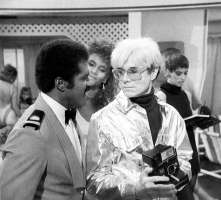Abstract
In the more than three decades that have elapsed since Andy Warhol’s death in 1987, his artistic stature—and art-market drawing power—have grown to proportions not even he could have foreseen; so much so, in fact, that he may confidently be ranked as the most famous artist of the twenty-first century. Although I am not concerned in what follows with Warhol’s fame as such (indeed, for reasons that will become clear, concepts such as “infamy” or “notoriety” may be more appropriate), I am interested in certain resonances of his permeation into not-strictly artistic culture. On one level, my hypothesis is simple: that the terms and implications of Warhol’s wider reception have something to tell us not only about the culture that received him but also about the stakes and significance of his artistic practice. In that sense, I follow those critics and historians who have sought to take Warhol’s popular impact seriously. To do so, it is instructive to compare Warhol’s appearance within two widely disseminated products of mainstream commercial culture: the third episode of the ninth season of the popular middle-brow television program The Love Boat, broadcast on the ABC television network on October 12, 1985, and the Academy Award–winning motion picture Klute, released in late June 1971. An examination of the different functions Warhol served within these two mass-media products will, in turn, open onto certain of the theoretical stakes pertaining to Warhol’s engagement with media technologies.


